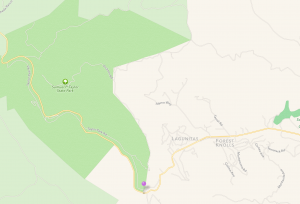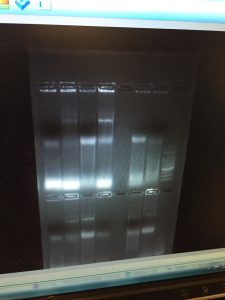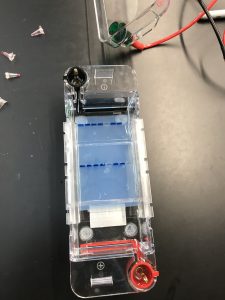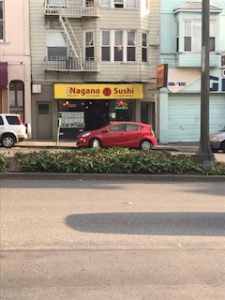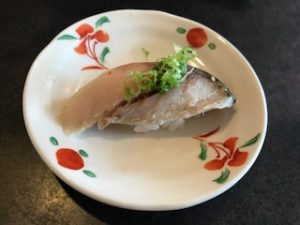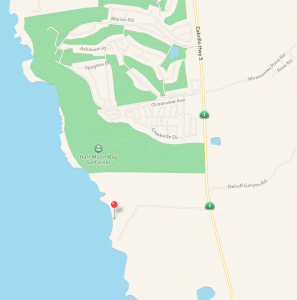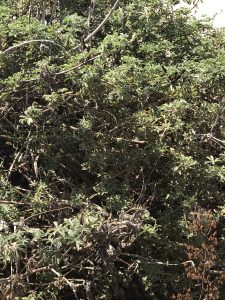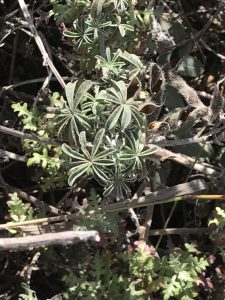The next step in our sushi experiment was to extract the DNA from each fish sample.
To begin, each sample was given a unique ID code. Sample 1 was named mh01, sample 2 was named mh02, sample 3 was named mh03, and sample 4 was named mh04.
For each sample, one 1.5 ml screw-cap microcentrifuge tube was labeled with the appropriate ID code on the top and on the side of the tubes
A paper plate was then divided into four sections and labeled according to the sample number. Using a scalpel and forceps, approximately 0.005g of tissue was cut from each sample on the paper plate in the appropriate quadrant. Since four different specimens were used, the scalpel and forceps with cleaned with ethanol and a Kim wipe between each fish type.
100 µl of Extraction Solution (ES) was added to each sample tube using a p200 µl micropipette with an unfiltered tip. Then, 25 µl of Tissue Preparation Solution (TPS) was added to each tube via a p200 micropipette. Using forceps, each tissue sample was added to its corresponding microcentrifuge tube.
A clean non-filtered pipette tip was used to gently mash the tissue; a clean tip was used for each tube.
The samples were left to incubate at room temperature for 10 minutes. Some tubes were left longer to incubate at room temperature as other tubes were being mashed; incubation did not start until all tubes were mashed. They were then moved to the heat block, where they were incubated at 95°C for 3 minutes.
Once the 3 minutes elapsed, the samples were removed from the heat block. Then, 100 µl of Neutralizing Solution (NS) was added to each tube. The samples were then vigorously mixed using a vortex for approximately 8 seconds per sample. Finally, the samples were placed on ice.
The next part of the lab entailed performing PCR to amplify CO1 from the fish DNA.
First, four microcentrifuge tubes were collected and each tube was labeled “1:10” along with its corresponding ID code (i.e. the first microcentrifuge tube was labeled 1:10 mh01, etc.) on the top and on the side of the tube.
In order to amplify our gene of interest, the genomic DNA (gDNA that was extracted above) was diluted using a 10x dilution. This was done to neutralize the concentration of DNA because too much DNA could prevent the PCR reaction from being performed successfully. 18 µl of purified, sterile water was added to each of the four microcentrifuge tubes just labeled. Then, 2 µl of gDNA was added to each tube. Each tube was “flicked” to ensure the solution was properly mixed.
Next, a master mix was created that included all the reagents required for a PCR reaction. Making a master mix would minimize the likelihood of errors associated with pipetting small volumes.
One master mix was made per table. Thus, for our table, the volumes of reagents listed in the master mix recipe were multiplied by 20. The reagents and volumes used to make the recipe were: 128 µl of purified water,;200 µl REDExtract – N- Amp PCR rx mix; 16 µl Forward Primer;16 µl Reverse Primer.
Then, 4 PCR tubes were labeled on the top and sides with the appropriate ID code for each sample. To each tube, 18 µl of the master mix was added. Then, 2 µl of the 1:10 dilution of gDNA was added to each tube. A sterile pipette tip was used for each sample. A negative control PCR tube was also established that consisted of 18 µl of the master mix. The purpose of this tube was to detect any amplification of gDNA that may have contaminated the master mix.
All PCR tubes (including negative control) were put in the thermocycler to allow the PCR reaction to occur. After the cycling was complete, the tubes were placed in the freezer.
A possible source of error in the experiment lied in utilizing the pipettes properly. That is, inaccurate measurements of liquids were taken, potentially affecting the volumes of reagents needed for the PCR reaction to be performed successfully.




